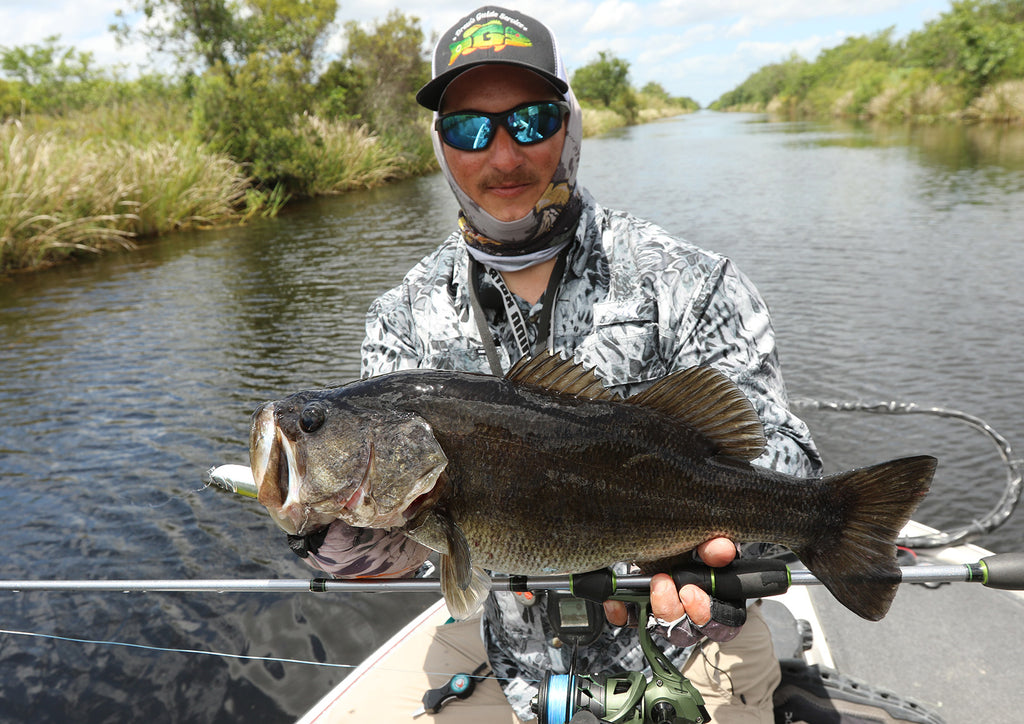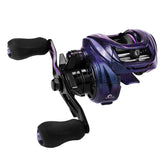
A Beginners Guide: River Fishing
River fishing can encompass a lot of options for an angler. To begin in river fishing though, you really need to know what kind of river you plan on fishing. Rivers come in all sizes, with some being more like mini lakes than rivers, while others will be more like babbling brooks than rivers. Each has its own identity, and most hold a variety of different species. Let’s take a look at the various kinds of rivers you may encounter, then come up with a beginners plan to fish a river system.
Growing up in New York, I have fished a lot of different river systems. Some small, some large. I can remember in my younger days plying the local rivers for trout. I fished the Nissequogue River often, especially on the opening day of trout season. In the Nissequogue, the river system where I fished was maybe 20 yards wide, with a maximum depth of 8 feet. The problem here though was tide… yes I said tide. The river flowed into the Sound, and tide below the dam affected the waters depth. Wading was a challenge for a 10-year old! Rivers have a lot of differences, so let’s take a look. Bear in mind when fishing rivers that flow and depth can change dramatically in a very short period of time. The opening of an outflow from a generating station upstream, effects of a rising tide and the worst case scenario, flash flooding from waters draining off Mountain tops and roads. Know the body of water you are fishing and watch the changing factors.
The author with a fine bass caught on one of the larger river systems in New York

River Types
In the river like the one I fished – Nissequogue – this would be considered a small river. Although some rivers start out small, for this beginners guide to river fishing, small rivers would be 20 yards wide or less, with depths to 6 feet.
In small rivers, species like trout and salmon can be very common. These rivers are usually fished with hip or chest waders or canoes. Light tackle and fly rod gear is the norm. Anglers may choose to wade upstream or to the base of small dams or overflows, or fish the banks, casting to pockets. In the canoe, targeting deeper pockets and rips is made a lot easier.
A favorite angling method on smaller rivers is the float and fly. Float and fly fishing is another way to present a small insect type fly, without the aid of a fly rod, which in itself can be intimidating to a beginner. The float and fly can be fished with light tackle spinning gear. It’s a simple rig where a small bobber is about 24 inches above an artificial fly. The fly drifts along in the current easily and is easy to detect a bite.
- Gear
- 4-6 foot spinning rods
- 1000-2000 spinning reels
- 7-9 foot fly rods/5-6 weight
- Small lures – Ned rigs, hair jigs, in-line spinners and flies
Moving up to larger rivers where widths can be 1 mile wide or wider, and water depths to 100 feet, everything changes. These are rivers where water flow can be quite strong depending on where you are on the river. In the Hudson in NY, depending on the tide – incoming or outgoing – the flow can be minimal to over 8-10 knots.
Larger river systems will fish more like lakes, but with some form of flow to the water. You will also encounter larger eddies and water breaks due to changing water depths. The fish will usually be located on humps, rips and breakwaters, and along the banks. In the St Lawrence River – BASS Magazines, top body of water for 2022, smallmouth bass action can be downright phenomenal. This river system offers a mix of areas where bays and shoals will lessen the current.
Smaller to mid-size rivers can be easily fished via a canoe

To fish larger rivers, they are best plied by boat, with the size of the river the deciding factor on what type of boat. On smaller rivers like the Salmon, also in NY, kayaks and canoes could easily be used, while the larger bodies, like the Mississippi, Hudson and St. Lawrence, larger boats and outboard motors are best.
- Gear
- 6-8 to 9 foot rods
- 3000-5000 size spinning and baitcasting reels
- 10-30 pound test line
- Lures from 3/8 ounce and larger
Work the flow
When river fishing anglers need to work the current to their favor. As the current flows over rocks, or where the water depth changes, fish will hold in the “quiet” water, waiting to ambush an easy meal. For the beginner, watching the water for upwelling, which is when deep colder water rises to the top. This nutrient rich water will bring bait feeding, and larger predator fish. As the waters flow in smaller rivers a bend in the river or prominent point will cause a break in the current. Fish these breaks, allowing your lure or fly to flow freely like a wounded or distressed baitfish or insect.
Another factor I always look for and will help a beginner is insects and over hanging trees. Although this applies to any body of water, on rivers, overhanging trees can drop insects into the water. These insects will attract fish of all types, again, looking for an easy meal.
If you are a beginner to river fishing I would start with a smaller river where you can wade the shore, or walk the banks. As you get more seasoned, then you can step it up to larger systems, and maybe to the giant ones out there in due time!
Carmans
The Carmans River in New York is a smaller river, but offers anglers both shorebound and small boat or kayak access. This size is perfect for the beginner to learn the ropes.













